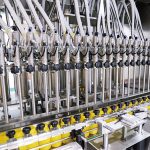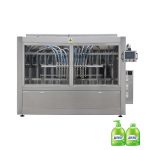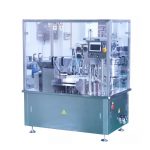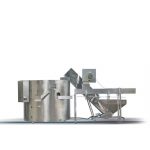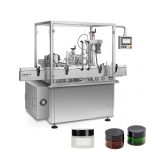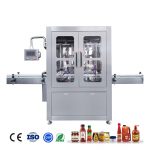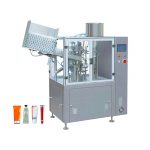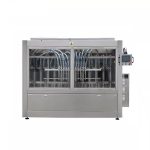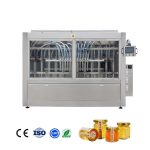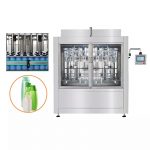Solvent filling machines are an essential part of many industries, including pharmaceuticals, chemicals, and cosmetics. These machines are used to fill containers with liquid solutions or suspensions, ensuring that the correct amount of product is dispensed every time. In this ultimate guide, we will cover everything you need to know about solvent filling machines, including how they work, the different types available, and how to properly maintain and troubleshoot them.
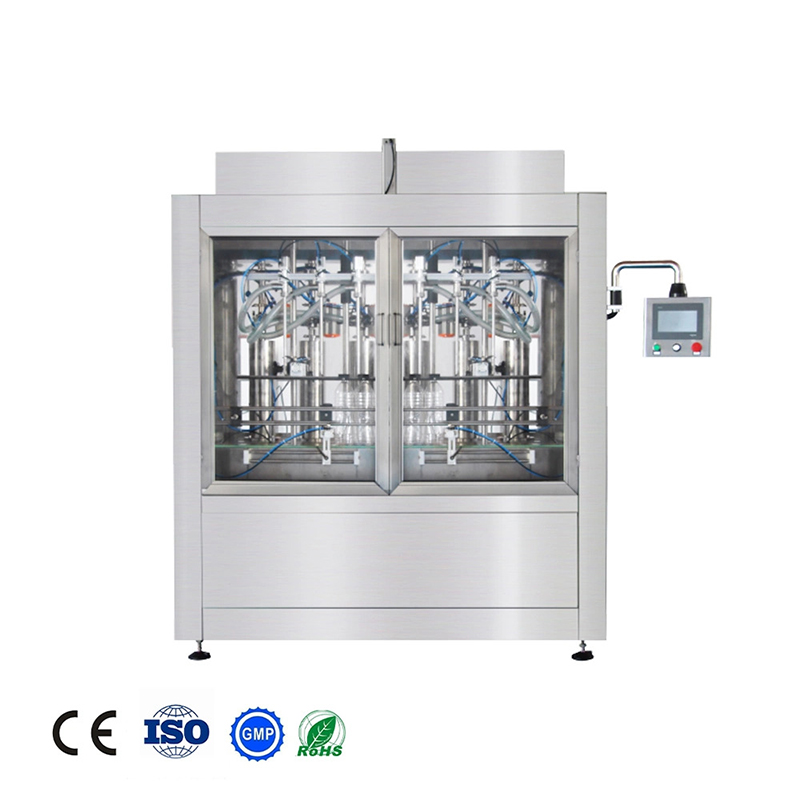
How Solvent Filling Machines Work
Solvent filling machines operate by drawing liquid from a supply tank or drum and then accurately dispensing it into containers. The filling process begins when an empty container is placed under the filling nozzle. The machine then dispenses the liquid into the container until it reaches the desired volume.
There are several different types of solvent filling machines, each with its own unique features and capabilities. Some of the most common types include:
- Piston Filling Machines: These machines use a reciprocating piston to dispense the liquid. The piston is driven by a motor and moves back and forth within a cylinder, drawing liquid from the supply tank and then pushing it out through the filling nozzle. Piston filling machines are highly accurate and can handle a wide range of viscosities and filling volumes.
- Gravity Filling Machines: These machines rely on the force of gravity to dispense the liquid. The container is placed under the filling nozzle, and the liquid is allowed to flow into the container until it reaches the desired volume. Gravity filling machines are simple and cost-effective, but they are not as accurate as other types of filling machines and are best suited for low-viscosity liquids.
- Peristaltic Pump Filling Machines: These machines use a peristaltic pump to dispense the liquid. The pump consists of a flexible tube that is squeezed by a rotating wheel or roller. As the tube is squeezed, it pushes the liquid through the filling nozzle and into the container. Peristaltic pump filling machines are highly accurate and can handle a wide range of viscosities, but they are more expensive than other types of filling machines.
Factors to Consider When Choosing a Solvent Filling Machine
There are several factors to consider when choosing a solvent filling machine, including:
- The type of liquid being dispensed: Different filling machines are better suited for different types of liquids. For example, piston filling machines can handle a wide range of viscosities, while gravity filling machines are best suited for low-viscosity liquids.
- The filling volume: The filling volume refers to the amount of liquid that needs to be dispensed into each container. Some filling machines are better suited for high-volume filling, while others are better for low-volume filling.
- The speed of the filling process: The speed of the filling process is important if you need to fill a large number of containers in a short amount of time. Some filling machines are faster than others, so it's important to choose one that meets your production needs.
- The accuracy of the filling process: Accurate filling is critical, especially in industries like pharmaceuticals where precise doses are important. Some filling machines are more accurate than others, so it's important to choose one that meets your accuracy requirements.
- The cost: The cost of the filling machine is an important consideration, as it can have a significant impact on your budget. It's important to strike a balance between cost and quality, and to choose a machine that meets your production needs without breaking the bank.
- The size and weight of the machine: The size and weight of the machine can be important if you have limited space in your facility or if you need to move the machine around frequently.
- The ease of maintenance and repair: It's important to choose a filling machine that is easy to maintain and repair, as this will help to minimize downtime and keep your production line running smoothly.
- The level of automation: Some filling machines are fully automated, while others are semi-automated or manual. The level of automation you need will depend on your production needs and budget.
Maintaining and Troubleshooting Solvent Filling Machines
Proper maintenance and timely repairs are crucial for keeping solvent filling machines running smoothly and minimizing downtime. Some of the key maintenance tasks to perform on a regular basis include:
- Cleaning: It's important to keep the filling machine clean to prevent contamination and ensure accurate filling. This may involve cleaning the filling nozzle, supply tank, and other parts of the machine on a regular basis.
- Lubrication: Proper lubrication is essential for keeping the filling machine running smoothly. Make sure to lubricate all moving parts on a regular basis, as recommended by the manufacturer.
- Calibration: It's important to calibrate the filling machine regularly to ensure that it is dispensing the correct volume of liquid. This may involve adjusting the filling nozzle or other parts of the machine.
If you encounter any problems with your solvent filling machine, there are several steps you can take to troubleshoot and resolve the issue:
- Check the manual: The first step in troubleshooting any problem is to consult the manual. The manual should contain detailed instructions for troubleshooting common problems and repairing the machine.
- Check for clogs or blockages: Clogs or blockages in the filling nozzle or supply lines can cause problems with the filling process. Check for any blockages and clear them if necessary.
- Check the supply tank: If the supply tank is empty or the liquid is not flowing properly, it can cause problems with the filling process. Make sure the tank is full and that there are no issues with the flow of the liquid.
- Check for leaks: Leaks in the filling machine can cause problems with the filling process and result in wasted product. Check for any leaks and repair them if necessary.
Conclusion
Solvent filling machines are an essential part of many industries, allowing for the accurate and efficient filling of containers with liquid solutions or suspensions. There are several different types of solvent filling machines available, each with its own unique features and capabilities. It's important to choose the right filling machine for your needs and to properly maintain and troubleshoot it to keep it running smoothly and minimize downtime.

